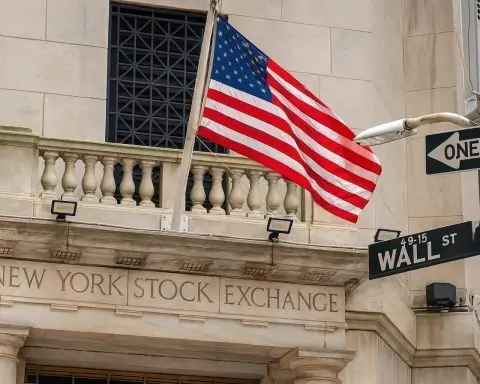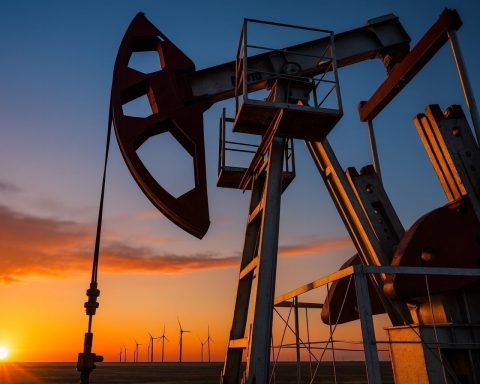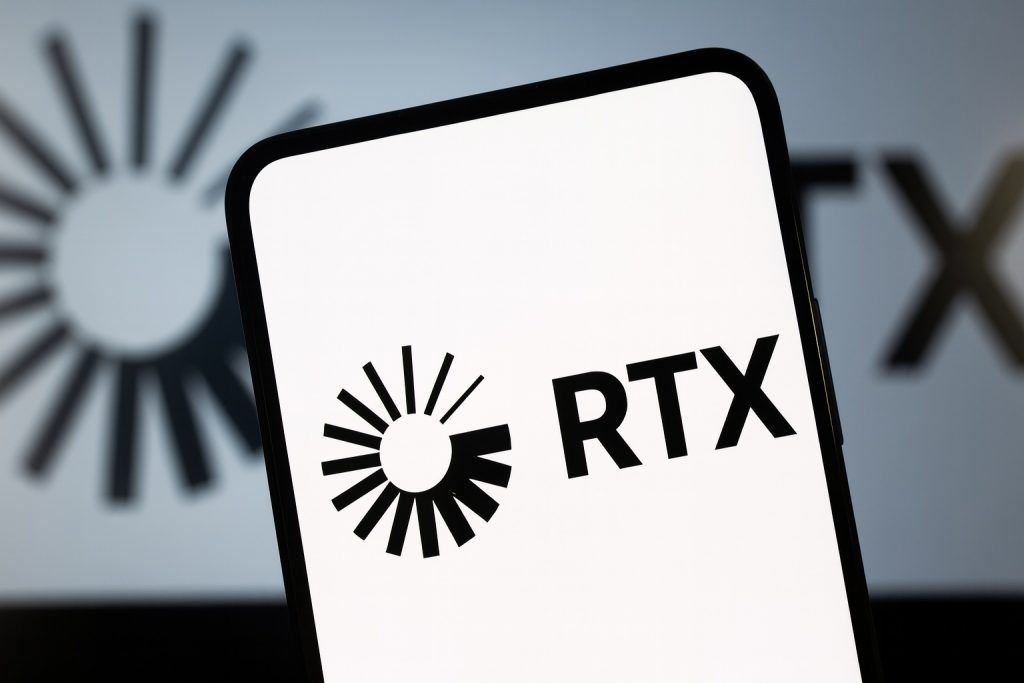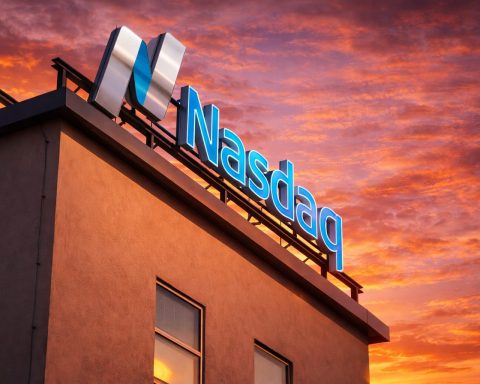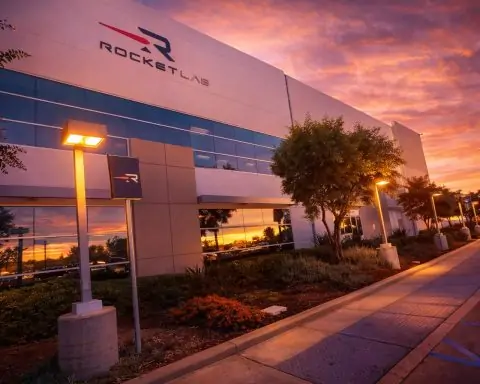- Record-Breaking Sales: Apple’s new iPhone 17 lineup is selling 14% faster than last year’s iPhone 16 series in the first 10 days in the U.S. and China [1] [2]. Counterpoint Research reports the base iPhone 17 model alone has nearly doubled sales in China year-over-year, driving a 31% jump in combined US–China sales [3] [4].
- Stock Rally: Apple’s share price jumped about 4% on the news, hitting a fresh high around $263 per share [5] [6]. That lifted Apple’s market capitalization to roughly $3.9 trillion – second only to Nvidia among global stocks [7] [8]. Over the past three months, AAPL is up ~24%, narrowing the gap with other Big Tech leaders [9].
- Analyst Optimism: Wall Street has turned bullish. Wedbush’s Dan Ives calls the launch a potential “golden era” for Apple and raised his 12‑month price target to $310 [10] [11]. Loop Capital upgraded Apple to “buy” and lifted its target to $315, noting demand could outpace expectations “through 2027” [12]. Bank of America and others have Buy ratings (PT ~$270) on strong upgrade cycles. Even so, some analysts caution that many good news may already be priced in: Jefferies downgraded Apple to Underperform (target ~$205), warning of “excessive expectations” [13] [14]. Consensus price forecasts still cluster in the mid-$250s [15] [16].
- Product Strength & Value: The iPhone 17 series introduced an ultra-thin “iPhone 17 Air” alongside standard and Pro/Pro Max models [17] [18]. Apple held prices flat: e.g. the 17 Pro still starts at $1,099 (256 GB), identical to last year [19] [20]. Critics say this gives consumers more value. “The base model iPhone 17 is very compelling… offering great value for money,” notes Counterpoint analyst Mengmeng Zhang – it packs a better A19 chip, improved display, and more storage all at 2024 pricing [21]. In China, where value is king, the base iPhone 17 has been a hit, nearly doubling year-ago unit sales [22] [23]. Carriers in the U.S. are also boosting subsidies (≈10% or ~$100) on high-end models like the 17 Pro Max to spur upgrades [24] [25].
- New Apple Hardware: Investors are also buzzing about Apple’s broader product cycle. On October 15, Apple quietly unveiled new M5-chip devices (a 14″ MacBook Pro, updated iPad Pros and Vision Pro 2 headset) without any price hikes [26] [27]. This strategy – better performance at the same cost – reinforces the upgrade narrative. As tech analyst Paolo Pescatore observed, the 17 series “brings a sense of newness” to a line that “has remained the same for too long” [28].
- Ahead of Earnings: Wall Street expects iPhone demand to show up in results. Analysts project roughly $101 billion in revenue (and ~$1.74 EPS) for Apple’s upcoming quarter [29] [30], above prior guidance. A beat and/or optimistic guidance next month could further boost the stock. Key risks include U.S.–China trade tensions and potential regulatory challenges (e.g. new antitrust cases in China) [31] [32].
Apple Inc. (NASDAQ: AAPL) is riding high on the strength of its new iPhone 17. Counterpoint Research data show the iPhone 17 line (launched in September) outsold the iPhone 16 series by 14% in their first 10 days on the U.S. and Chinese markets [33] [34]. In particular, the entry-level iPhone 17 has been a smash hit – Chinese demand for the basic model nearly doubled versus last year [35] [36]. Counterpoint senior analyst Mengmeng Zhang credits its “excellent cost-benefit” and strong specs (new A19 chip, bigger screen and storage) at the same price as 2024 [37]. As one consumer note, Apple even offered deals and coupons locally to lure buyers. [38]
This blockbuster launch has catapulted Apple’s stock. On October 20, AAPL jumped about 4% intraday, hitting a record ~$264 and briefly nearing a $4 trillion market cap [39] [40]. By afternoon it was trading around $263–264 [41] [42]. As Reuters reports, that put Apple as the second-most valuable company on Earth (behind only Nvidia) with roughly $3.9 trillion in equity value [43] [44]. Even after a rough start to 2025, AAPL is now firmly back near its all-time high: year-to-date it’s modestly positive (~+1–2%) [45] [46]. Other Big Tech names (like Nvidia, Microsoft, Alphabet) have each climbed 20–30%, but Apple’s rebound reflects the hype around its latest products [47] [48]. Notably, a tech selloff on Oct. 14 (over U.S.–China tariff news) briefly knocked Apple down only to $248, but it “proved surprisingly resilient… recovering” by week’s end [49] [50].
Wall Street’s reaction has been mixed but generally upbeat. Several firms raised their ratings after seeing the strong iPhone momentum. Loop Capital cut their underperform stance, upgraded Apple to “Buy” and lifted the 12‑month target to $315 (from $226), writing that demand “may exceed expectations through 2027” [51]. Wedbush’s Dan Ives similarly calls the launch possibly the start of a new “golden era” for Apple, boosting his target to $310 [52] [53]. Bank of America, Bernstein and others also maintain buy ratings, citing Apple’s huge user base and upgrade cycle. On the flip side, some cautious voices note Apple’s stock is richly valued: Jefferies just cut AAPL to Underperform (PT ~$205), arguing that a lot of good news is already baked in [54] [55]. Even bullish analysts concede that current consensus targets (around the mid-$250s) imply only moderate upside if execution stays steady [56] [57].
Behind the numbers, Apple’s latest products are driving this renewed optimism. In September, the iPhone 17 line launched with a brand-new ultra-thin “Air” model alongside the regular and Pro versions [58] [59]. Reviewers and users highlight the design refresh and upgraded hardware. “This new device will bring a sense of newness to the iPhone, which has remained the same for too long,” tech analyst Paolo Pescatore remarked [60]. Apple even made the bold move of not hiking prices: the 17 Pro still starts at $1,099 (256 GB) – identical to last year [61] – so buyers effectively get more (storage, features) for the same money. The standalone 17 Air (starting at $999) offers a slimmed-down package that’s captured consumer interest; Apple sold out its initial supply quickly in Asia [62] [63]. Meanwhile carriers in the U.S. have juiced promotions on the Pro Max, boosting subsidies (≈$100 extra) to nudge buyers into the high-end models [64].
Apple’s product improvements extend beyond phones. On October 15, the company quietly rolled out new M5‑chip devices – a refreshed 14″ MacBook Pro, updated 11″ and 13″ iPad Pros, and a second-generation Vision Pro headset – all via press releases rather than a big keynote [65] [66]. Crucially, Apple kept launch prices flat on these items too: for example, the base M5 MacBook Pro remains $1,599, the M5 iPad Pro $999, and Vision Pro 2 $3,499 (all unchanged) [67]. In an inflationary world, this “do more for the same price” strategy underscores Apple’s focus on value and ecosystem growth [68] [69]. Industry commentators note Apple is emphasizing performance (especially on-device AI tasks with the 3nm M5 chip) while holding the line on cost [70] [71].
Looking ahead, analysts expect these efforts to pay off in Apple’s finances. For the current quarter (Apple’s fiscal Q4), consensus estimates call for roughly $101 billion in revenue and about $1.74 in EPS [72] [73]. A beat on those numbers could extend the rally. Investors will be watching October’s earnings report closely for any sign that the iPhone 17 “supercycle” and other product gains translate into stronger guidance for the holiday season. On the macro side, easing inflation or U.S. rate cuts could further lift sentiment, but wildcards remain: renewed U.S.–China trade tensions, China’s smartphone competition (local brands like Huawei/Xiaomi are pushing on the high end) and regulatory pressures (e.g. an antitrust suit in China, or EU digital rules) could temper the enthusiasm [74] [75].
In sum, Apple’s latest quarter has started with a bang. Robust iPhone 17 demand has ignited talk of a long-awaited upgrade cycle, sending the stock toward new highs. As one market strategist put it, the fresh model is “doing much better than anticipated… demand trends are now on the front foot” [76]. With Apple closing in on a $4 trillion valuation and analysts debating whether this is a “golden era” or simply expectation baked-in, the tech world will be watching closely whether Cupertino can sustain this momentum into the new year [77] [78].
Sources: Market data and analysis from Reuters [79] [80], CNN Brasil (Counterpoint report) [81], Nasdaq/RTTNews [82] [83], Investing.com [84] [85], and TechStock² (TS2.tech) [86] [87] [88]. These expert sources provide the facts and quotes used above.
References
1. www.reuters.com, 2. www.investing.com, 3. www.cnnbrasil.com.br, 4. www.investing.com, 5. www.reuters.com, 6. www.nasdaq.com, 7. www.reuters.com, 8. ts2.tech, 9. www.nasdaq.com, 10. ts2.tech, 11. ts2.tech, 12. www.nasdaq.com, 13. ts2.tech, 14. ts2.tech, 15. ts2.tech, 16. ts2.tech, 17. ts2.tech, 18. www.reuters.com, 19. ts2.tech, 20. ts2.tech, 21. www.investing.com, 22. www.cnnbrasil.com.br, 23. www.investing.com, 24. www.investing.com, 25. www.nasdaq.com, 26. ts2.tech, 27. ts2.tech, 28. ts2.tech, 29. ts2.tech, 30. ts2.tech, 31. ts2.tech, 32. www.reuters.com, 33. www.reuters.com, 34. www.investing.com, 35. www.cnnbrasil.com.br, 36. www.investing.com, 37. www.investing.com, 38. www.investing.com, 39. www.reuters.com, 40. www.nasdaq.com, 41. www.nasdaq.com, 42. www.reuters.com, 43. www.reuters.com, 44. ts2.tech, 45. ts2.tech, 46. ts2.tech, 47. ts2.tech, 48. ts2.tech, 49. ts2.tech, 50. ts2.tech, 51. www.nasdaq.com, 52. ts2.tech, 53. ts2.tech, 54. ts2.tech, 55. ts2.tech, 56. ts2.tech, 57. ts2.tech, 58. ts2.tech, 59. www.reuters.com, 60. ts2.tech, 61. ts2.tech, 62. www.nasdaq.com, 63. www.techi.com, 64. www.investing.com, 65. ts2.tech, 66. ts2.tech, 67. ts2.tech, 68. ts2.tech, 69. ts2.tech, 70. ts2.tech, 71. ts2.tech, 72. ts2.tech, 73. ts2.tech, 74. ts2.tech, 75. www.reuters.com, 76. www.reuters.com, 77. ts2.tech, 78. ts2.tech, 79. www.reuters.com, 80. www.reuters.com, 81. www.cnnbrasil.com.br, 82. www.nasdaq.com, 83. www.nasdaq.com, 84. www.investing.com, 85. www.investing.com, 86. ts2.tech, 87. ts2.tech, 88. ts2.tech

